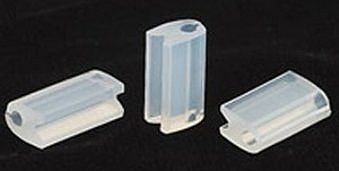
Ever heard of grafting tomatoes? Tomatoes are the clear garden favorite! Colors range from red to yellow to black. Sizes and shapes range from tiny grape and cherry tomatoes to standard size and beefsteak size. Some are heirloom varieties, some are modern hybrids. Each has advantages and disadvantages.
Every Silver Lining Has a Cloud
It’s not merely flavor or juiciness that makes home grown tomatoes special. It’s the aroma. It’s the fun of growing. Homegrown tomatoes are best picked just before eating.
Grocery store tomatoes are shipped green. This results in the loss of full flavor. Store bought tomatoes are bred more for shipping durability than for flavor.
Carefully maintained plants can yield a bounteous harvest. But every silver lining has a cloud. Some desirable varieties are highly subject to invaders. These include fungus, bacteria, and just plain bugs!
Is There a Solution?
A drought, blight, or similar mishap results in crop failure. There are a number of tools for the gardener to battle these enemies. There is organic composting. There is the judicious use of pesticides, herbicides, and fertilizers. Finally, there is grafting tomatoes.
Benefit from Grafting Tomatoes?
The reader is probably familiar with grafted trees. Grafted trees consist of branches grafted from one or more varieties of tree onto the trunk and root stock of another variety. There is even one multi-grafted fruit tree called the fruit salad tree. That tree allows the small plot grower to raise a variety of fruit.
Although many of the modern hybrids are tasty, heirloom tomatoes offer subtleties of flavor and aroma not experienced by most home gardeners. Some of the heirlooms lack the hardiness of modern hybrids.
Grafting heirloom tomatoes into the root stock of modern hybrids improves plant vigor and promises increased yield.
Are You Willing to Invest the Effort?
The result is, the best of both worlds, if one is willing to put in the work required for the grafting. There are at least three techniques in use to achieve the task. One is the tube method. Another is the tongue method. Both are well demonstrated in the nine-minute video, below.
A third method is the cleft method. The lower plant portion with the hybrid root stock is cut square. The upper heirloom scion is nicely depicted by this next video.
For the Home Gardener
Although the videos depict sanitary conditions, the home grower can achieve fine results without strenuous effort. It is important, though, to reduce plant moisture loss after grafting.
Note: You might also enjoy “Chemicals to Peel Tomatoes”
References:

I am from South Africa and I am fascinated by the tomato grafting techniques. How can I purchase the rootstock and scion seeds from abroad? I’m not sure if there is a supplier in South Africa.
I have heard that in some parts of Africa, you can throw a ripe tomato through the window into the garden and within two weeks, tomato plants will be sprouting. I assume (I don’t know) that any tomato you buy in the shop will be a modern variety. If you plant the seeds from that, hopefully you will get a good sturdy root stock. I searched Google for tomato seeds in South Africa and found this page: https://www.seedsforafrica.co.za/collections/vegetable-seeds/tomato Hope you get (or got) to practise grafting techniques with tomatoes.
Tomatoes can also be grafted onto potato plants. Apparently this is used to help trainee gardeners learn the techniques of grafting. Potatoes and Tomatoes both belong to the family solanum. Also, apparently, there is no commercial benefit in doing this but it could be a nice experiment for children or a school.